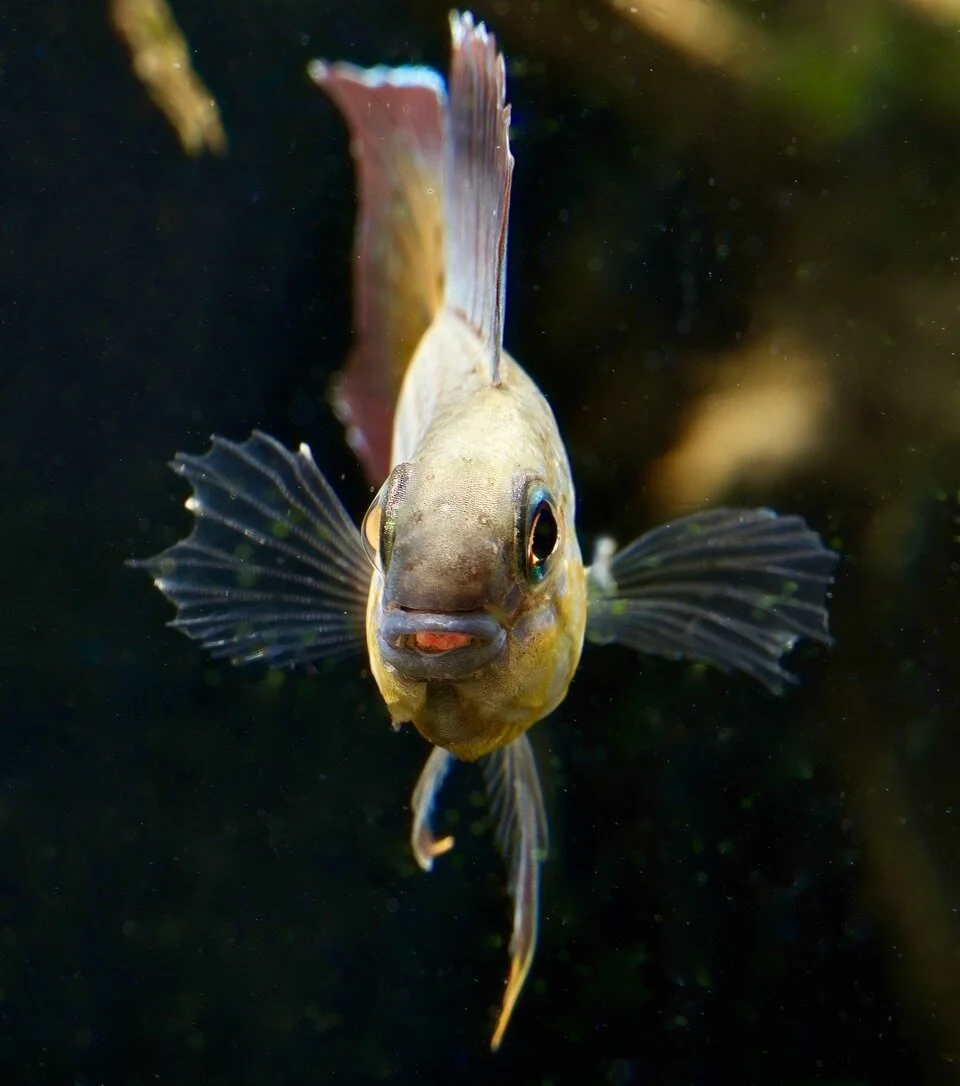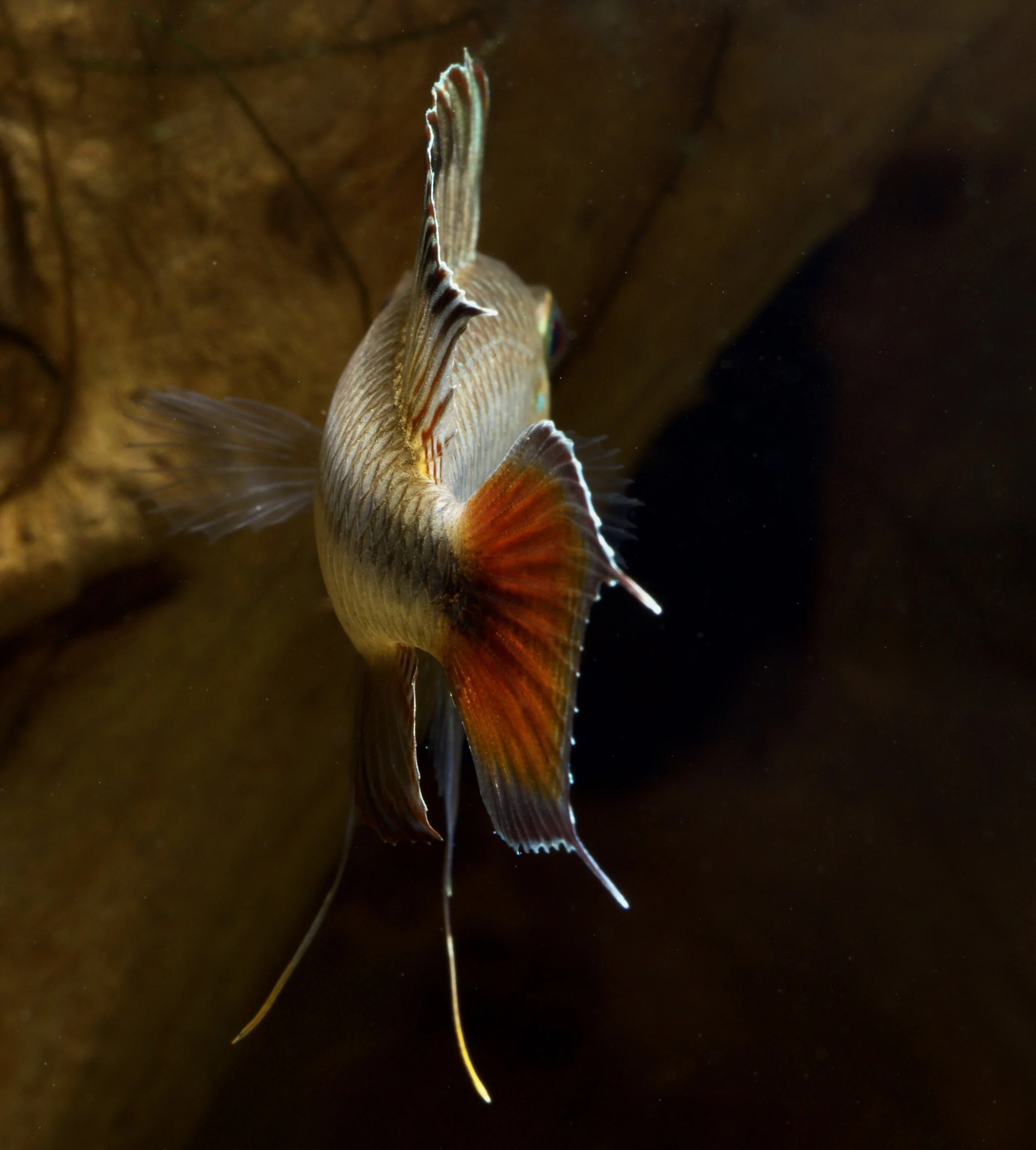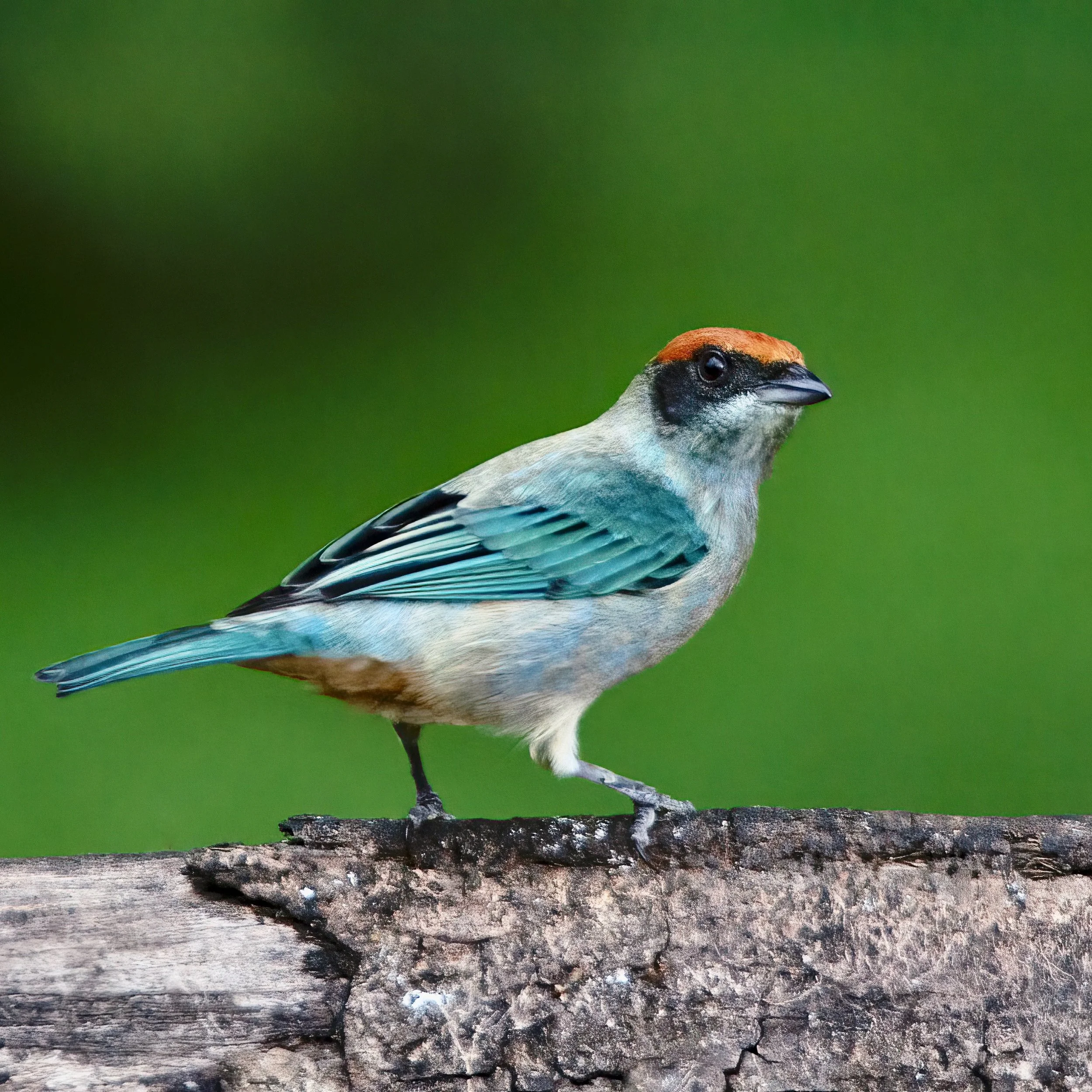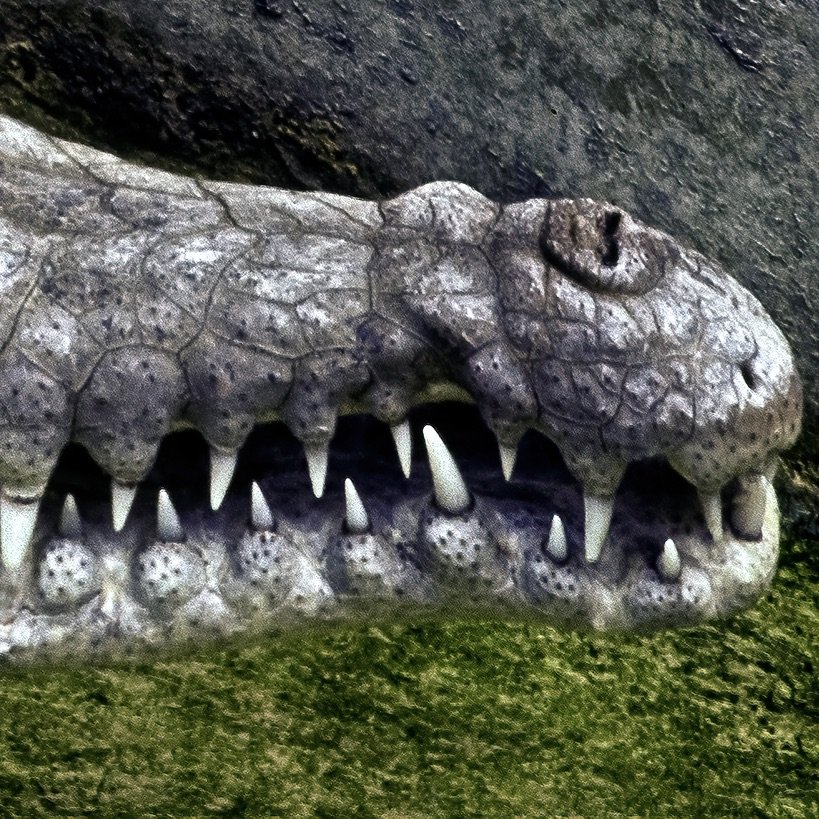The Icthyoscope 3.0
by Peter Rockstroh
If it weren’t for the water, photographing live fish in captivity would be very easy. But as it happens, water isn’t the only source of trouble. Since it needs to be contained in a material with good optical qualities and no leaks, fish end up swimming inside a medium that reflects and refracts light, enclosed in another material that does the same thing.
A young silver arowana (Osteoglossum bicirrhosum) in a planted aquarium. When the light is under control fish calm down rapidly because they feel at ease and it becomes much easier to produce consistently high quality, properly lit photos of your subjects. Image: ©P. Rockstroh 2020.
Thus, the proverbial riddle wrapped in a mystery and rolled inside an enigma that’s been drenched in fish sauce.
Cardinal tetra (Paracheirodon axelrodi), an iconic and beautiful Orinoco basin tropical fish. Image: ©P. Rockstroh 2020.
So photographing fish in an aquarium can be tricky in ways that transcend the physics of light. I was photographing fish for a personal project about three years ago, using the same style container biologists have used for decades to photograph fish during collecting trips. It is usually a small aquarium, about 30 cm x 10 cm x 10 cm (12” x 4” x 4”), with an additional piece of glass that fits inside and runs the length and height of the tank. The fish is placed in the tank and its movements restricted with the piece of glass, to be able to photograph the animal alive.
Although this approach allows one to obtain closeup photos of live fish, more often than not they don’t look the part. They appear pale, often with a cryptic pattern of stripes, and sometimes nearly translucent.
Altum or Orinoco Angelfish (Pterophyllum altum) photographed in the Icthyoscope 1.0. Image: ©P. Rockstroh 2020.
Theoretically, the idea behind this design is to capture their colors in life, which fish will lose once preserved. Something novice ichthyologists don’t bother to mention (or notice?) is that live fish in shock coloration don’t look so very different from preserved specimens. And at this stage, quite a few of these fish would already look better in a frying pan…
…but that is the subject for a different blog altogether.
I wanted the subjects to show all the glorious colors that make them ornamental fish, so I decided to design an aquarium that would allow me to record this beauty. To make it easy to carry and a bit more resistant, I made it from (Plexiglass) acrylic instead of glass. I made both side panels and the cover from translucent white acrylic, to get soft, diffused light from above and sides, be it natural or flashlit. I fashioned the bottom from black acrylic, with an insert that would allow me to place aquatic plants in the background and press them against the back wall. Both front and back were transparent, but I had two additional pieces of acrylic - one white the other matte black - as interchangeable backgrounds.
I then took the Ichthyscope 1.0 to Puerto Inírida in the Department of Guainía, Colombia for a field trial and used it there for a week. When I returned, I downloaded all the image files on my computer and started going over the material. The images were well lit, but the first thing I noticed was that all the photos looked strange. There was something about them that I couldn’t point my finger at, but they all had that same Je ne sais Quack.
The Ichthyoscope 1.0 in use at a fisherman’s house in rural Colombia, under close supervision of the resident Director of Photography and Creative Director. Image: © P. Rockstroh 2020.
I had reviewed maybe the first dozen photos, when I noticed that the black background wasn’t black anymore. There was a major snowstorm in the aquarium, and it got worse with every picture, as shown below.
Problems with “snow” Part I: Armored catfish (Leporacanthicus galaxias) portrait ruined by reflected debris and skin mucous suspended in the water. Image: ©P. Rockstroh 2020.
Problems with “snow” Part II: Emerald catfish (Brochis splendens) portrait that ended up in the discard files. Image: ©P. Rockstroh 2020.
Because of stress during capture and handling, the fish were losing scales and skin mucus. Three flash units, one mounted on each side and one on top, made sure that no particle suspended in the water went unnoticed. With no filtering system and a very small water volume, it took only minutes for it become so contaminated with microscopic debris that is became impossible to obtain a quality photograph. Although the design was lightweight and innovative, I had just created one of those NEW & IMPROVED versions of gadgets that I hate so much.
Giving it up as a bad job, I then returned to a design I made over 20 years ago. It is my standard 100-liter/26.5 gl tank with a 12-liter/3.20 gl sump, which I’ve used to keep and breed all sorts of small cichlids, characins and catfish. It has a black polystyrene sheet as a divider, to visually block the view of the sump from the front and has all the gear in the sump. All you see from the front is aquascape and fish.
I built the first one and installed it beside my desk in my home office. After placing the first plants and an interesting piece of driftwood, I put in a small group of dwarf cichlids (Apistogramma flabellicauda & A. iniridae), a dozen dwarf suckers (Otocinclus affinis) and a dozen cardinal tetras (Paracheirodon axelrodi). See images of build and finished tank below.
Light always shines on fish from above in nature, as shown in this school of Corydoras catfish. Image: ©P. Rockstroh 2020.
I placed my flashes, one on each side and one on top of the tank and started photographing the fish. Before downloading these photos to my computer, I looked at a few videos of fish I had filmed in creeks outside Inirida. Now I knew what the Quack in Je ne sais Quack was.
As soon as I saw my aquarium photos, I realized what looked weird about the images from the Ichthyoscope 1.0. Fish are never lit sideways under water. Light always and only comes from above. They might be well illuminated, but they don’t get lateral light under water.
Rear sump shown prepared for aeration, filtration, heating elements, etc. Image: ©P. Rockstroh 2020.
Shown above, the sump has four compartments in which I can distribute different amounts of material. To photograph fish, I use two compartments with acrylic wool, just to remove particles. The other two compartments are used to condition the water, heat it and inject CO2.
Fine-tuning placement of rockwork, submerged wood and plants with a small number of fish to condition the tank. Image: ©P. Rockstroh 2020.
The domestic Ichthyoscope in my study, showing a very stubborn piece of driftwood, lashed to the deck, stubbornly unwilling to waterlog. Image: ©P. Rockstroh 2020.
The Ichthyoscope went through two additional changes over the next year: First, it was fitted with a dark cloth, under which I put my camera. There are no light reflections from outside under this tent. The second modification I made include installing three flash units on top, synchronized with an infrared trigger mounted on the camera’s hot shoe. No matter where the fish/es or plants is/are that I’m photographing, I always have good light. And if I move back, I always capture well-lit images of the whole tank.
The Icthyoscope 3.0, prepped to photographa selection of aquatic plants. ©P. Rockstroh 2020.
Finished Upper Orinoco-themed aquarium in the author’s study as discussed sbove. Image: ©P. Rockstroh 2020.
Notes on how to get tropical freshwater fish to display
Dwarf cichlid (Apistogramma flabellicauda). Image: ©P. Rockstroh 2020.
Apistogramma are dwarf South American cichlids with very interesting behaviors. They are sexually dimorphic, and both males and females have distinct breeding colors. Males are territorial and aggressively defend their nests from intruders. For this reason many successful Apistogramma breeders maintain groups of dithers (piscine whipping boys) in their tanks, so that male Apistogramma species don’t channel their aggressions towards their mates or fry.
Dwarf cichlid (Apistogramma flabellicauda) male in full display. Light, mood and background have a huge impact on these fishes colors. Image: © P. Rockstroh 2020.
The males show their best colors during courtship and territorial displays, during which they extend their fins and vibrate their tails. This behavior can also be induced with a mirror. The trick consists in knowing where to place the mirror to photograph the male in full breeding regalia, hopefully parallel to the glass, to get every detail in focus, without sacrificing anything to reflection, refraction or diffraction.
Iridescent colors of fish, like butterfly wings or feathers, are the result of light diffracting through many layers of translucent material with tiny amounts of minerals. When the light shines through these layers, the pigment color becomes visible. When the light hits these layers at a 45°, the layers refract the complementary color, especially over a dark background.
Applied to our fish portrait, colors will always show their highest saturation and intensity when lit from above at a 45° against a dark background. I also prefer using this lighting and background combination because it highlights all the fin details.
A male threadfinned dwarf cichlid (Apistogramma iniridae) showing off for the mirror. Image: ©P. Rockstroh 2020.
Above, the fairly recently described (Mesa & Lasso, 2011) and very attractive dwarf cichlid (Apistogramma flabellicauda) shown displaying from the front and tail. Images: ©P. Rockstroh 2020.
At just under an inch/2.5 cm in length, an ember tetra (Hyphessobrycon amandae) glowing like its namesake alongside a shoal of rummy-nosed tetras (Hemigrammus rhodostomus) visible in the background. This example promptly recovered intense wild colors after being placed in a well-planted aquarium. Image: ©P. Rockstroh 2020.
The other opportunity for capturing interesting images is immediately after a water change. Changing water level from low to higher, and temperature from high to lower will stimulate breeding behavior in many species. Try to set up your gear before you finish filling the tank, since the response can come surprisingly fast.
Some Scenes from an Upper Río Orinoco tropical fish collection locality
All videos shown below were filmed in 2018 during fieldwork by the author in and around villages on the outskirts of Puerto Inírida, Department of Guainía, near the confluence of the Guaviare and Orinoco rivers in southeastern Colombia. Many residents of the smaller communities in this region derive their livelihoods from carefully monitored collection of ornamental tropical fish for sale to the world’s freshwater aquarium enthusiasts. This environmentally-friendly harvest provides an incentive for these communities to maintain native forest cover nearby deserves (greater) continued support from the global aquarist community.
The clip shown above was filmed in the installations of one of the old families of fish collectors in the area. The director of photography, technical assistant and animal handling expert (always ready with his net), are all fourth generation fisherfolks. Icthyoscope 1.0 shown with the author.
These semi-magnificent underwater scenes were filmed with sophisticated dive gear and photographic equipment in less than 60 cm/24”of water; that is to say with a GoPro on a stick.
The video above shows groups of tetras, Hemigrammus schmardae and H. rubrostriatus feeding in the current. It is very luminous, due to the white sand of the area, a typical soil and riverbed component in this corner of Colombia. Also clearly visible is the Earl Grey tea color of the tannin-rich waters. We measured the pH values of the stream after filming these clips and were very surprised at the very acid 3.80 readings.
The clip above shows very clearly that not everybody should be licensed to drive a stick. After unceremoniously ramming into the vegetation along the edge of this little creek, the camera finally explores a very productive little nook where you can observe two male dwarf cichlids (Apistogramma iniridae) in territorial display. The other fish species shown in this video are cardinal (Paracheirodon axelrodi) and other unidentified tetras (Moenkhausia species).
Good shooting!
Shoaling cardinal tetras (Paracheirodon axelrodi) in a holding tank. Cardinals are one of South America’s most beautiful freshwater fishes and - despite also being produced commercially in southeast Asia and the EU - are still exploited to the tens of millions annually by many indigenous communities in the Río Orinoco and middle Río Negro of eastern Colombia and northwestern Brazil. Discovered in 1951 and described by U.S. National Museum icthyologist Leonard P. Schultz in 1956, the specific epithet was dedicated to trailblazing aquarist and publisher, (TFH Publications) Dr. Herbert Axelrod. Image: ©P. Rockstroh 2020.
All content ©Exotica Esoterica LLC® 2010-2025 and ©Peter Rockstroh 2020
Follow us on:




















